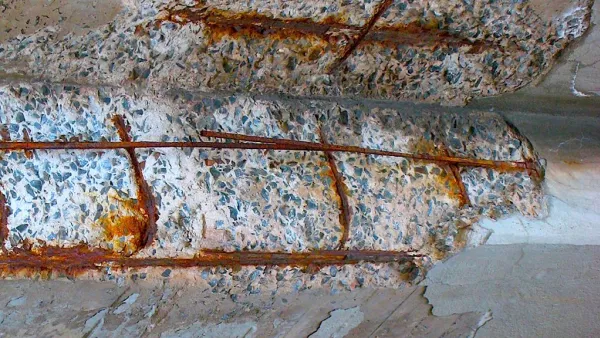As May 31 approaches—the date when the current patch bill that supplements insufficient gas tax revenues to the Highway Trust Fund expires, The Wall Street Journal, a favorite among many conservative political leaders, sends an unhelpful message.
Remarkably, the editorial shows an excellent command of many of the facts on federal transportation funding that even gas tax boosters may be unaware of:
The problem is that since 2008 federal HTF (Highway Trust Fund) spending has far outpaced dedicated gas-tax revenues, and Congress has made up the difference with $54 billion in cash transfers from general revenues. To cover future HTF obligations and close the deficits, fuel taxes need to rise by 10 to 15 cents a gallon, according to the Congressional Budget Office.
That's not quite right, but close enough. The cash transfers are "closer to $70 billion", according to an August 12, 2014 Congress Blog in The Hill by the Bipartisan Policy Center. The editors apparently neglected to include the current patch bill subsidizing the Highway Trust Fund that expires on May 31.
I was thinking about the editorial this morning as I listened to a story about an interstate highway bridge collapse on Monday (Oct. 19) in Cincinnati that caused the death of one construction worker.
I-75 was closed at the time as the bridge was being demolished—the crash was treated as a 'workplace incident', unlike the collapse of a bridge carrying traffic such as the I-5 bridge over Skagit River in Washington on May 24, 2013, sending two vehicles into the river, and the I-35W bridge over the Mississippi River in Minnesota on August 1, 2007, killing 13 people.
The I-75 bridge collapse caused me to think about all the structurally deficient bridges (per our June post, one in ten) in the United States. Structurally deficient bridges are safe, as we noted in our post, based ironically on a Wall Street Journal article on the Skagit Bridge collapse, but they are deficient in other ways.
"This is not the sign of deteriorating infrastructure, this is a sign of vulnerable infrastructure," said Abolhassan Astaneh-Asl, a civil-engineering professor at the University of California, Berkeley.
The Associated Press reported in September, 2013 that hundreds of bridges in Ohio are both structurally deficient and fracture critical, meaning "a lack of redundancy, which makes a structure susceptible to collapse should any individual component fail," according to Places Journal, compounding the bridge's vulnerability
“The funding has not kept up with the demand or the need out there,” said Fred Pausch, executive director of the County Engineers Association of Ohio. “If you don’t keep up with maintenance, it’s really easy to get behind.”
However, The Wall Street Journal editorial board is less concerned with supplying the necessary funding than making policy points about how gas tax funds are spent.
Drivers now see about a quarter of their gas taxes diverted to subsidize mass transit in merely six metro areas and sundry other programs for street cars, ferries, sidewalks, bike lanes, hiking trails, urban planning and even landscaping nationwide. Trolley riders, et al., contribute nothing to the HTF.
In response to The Journal's claim that it is a "myth is that U.S. roads and bridges are 'crumbling,' to use the invariable media description," 60 Minutes recently did an exposé about an actual crumbling I-95 overpass in Philadelphia that might have collapsed had it not been for two contractors from the state Department of Transportation who discovered it while on a lunch break.
Regrettably, the WSJ editors are not proposing anything new to replace the two-decades old gas tax. We've heard it before here. And it does nothing to advance an answer to the $100 billion question that Congress has four months to find.
Correspondent's note: Letters to the editor can be sent to [email protected] and viewed online.
FULL STORY: Abolish the Gas Tax A better way to fund roads and bridges than more pain at the pump.

National Parks Layoffs Will Cause Communities to Lose Billions
Thousands of essential park workers were laid off this week, just before the busy spring break season.

Retro-silient?: America’s First “Eco-burb,” The Woodlands Turns 50
A master-planned community north of Houston offers lessons on green infrastructure and resilient design, but falls short of its founder’s lofty affordability and walkability goals.

Delivering for America Plan Will Downgrade Mail Service in at Least 49.5 Percent of Zip Codes
Republican and Democrat lawmakers criticize the plan for its disproportionate negative impact on rural communities.

Test News Post 1
This is a summary

Test News Headline 46
Test for the image on the front page.

Balancing Bombs and Butterflies: How the National Guard Protects a Rare Species
The National Guard at Fort Indiantown Gap uses GIS technology and land management strategies to balance military training with conservation efforts, ensuring the survival of the rare eastern regal fritillary butterfly.
Urban Design for Planners 1: Software Tools
This six-course series explores essential urban design concepts using open source software and equips planners with the tools they need to participate fully in the urban design process.
Planning for Universal Design
Learn the tools for implementing Universal Design in planning regulations.
EMC Planning Group, Inc.
Planetizen
Planetizen
Mpact (formerly Rail~Volution)
Great Falls Development Authority, Inc.
HUDs Office of Policy Development and Research
NYU Wagner Graduate School of Public Service



























